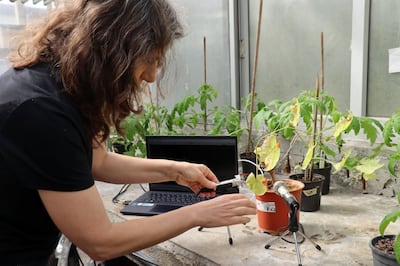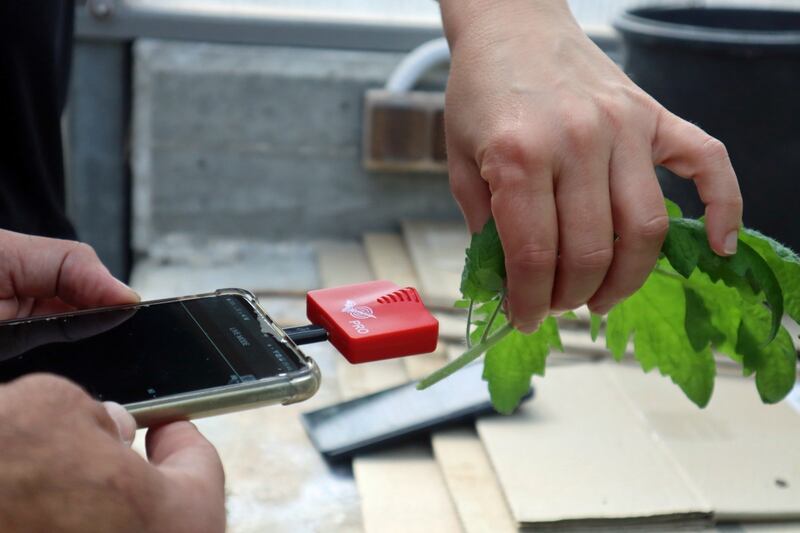Stressed plants emit noises that can be heard by nearby insects up to one metre away, scientists have found.
Tomato and tobacco plants suffering from dehydration or severed stems make the sounds — similar to bubble wrap popping — comparable in volume to normal human conversation, researchers in Israel report.
The frequency is too high for human ears to detect but they can likely be heard by insects, mammals and possibly other plants, according to the study published in the journal Cell on Thursday.
“Even in a quiet field, there are actually sounds that we don't hear and those sounds carry information,” said evolutionary biologist and senior author Prof Lilach Hadany, from Tel Aviv University.
“There are animals that can hear these sounds, so there is the possibility that a lot of acoustic interaction is occurring.”
Ultrasonic vibrations have been recorded from plants before, but the Israeli study provides the first evidence that it is airborne.
“Plants interact with insects and other animals all the time and many of these organisms use sound for communication so it would be very suboptimal for plants to not use sound at all,” Prof Hadany said.
Sound recordings of plants could be used in agricultural irrigation systems to monitor crop hydration and help distribute water more efficiently, the researchers say.

“The fact that plants are making these sounds opens a whole new avenue of opportunities for communication, eavesdropping and exploitation of these sounds,” said co-senior author and neuro-ecologist Yossi Yovel.
“Now that we know that plants do emit sounds, the next question is — who might be listening?
“We are currently investigating the responses of other organisms, both animals and plants, to these sounds, and we’re also exploring our ability to identify and interpret the sounds in completely natural environments.”
Researchers used microphones to record healthy and stressed tomato and tobacco plants, first in a soundproofed acoustic chamber and then in a noisier greenhouse environment.
They stressed the plants by not watering them for several days and cutting their stems. The team found that the stressed plants emit far more sounds than healthy ones.
The plant sounds resemble pops or clicks, and a single stressed plant emits between 30 and 50 an hour at seemingly random intervals.
“When tomatoes are not stressed at all, they are very quiet,” said Prof Hadany.

Water-starved plants began emitting noises before they were visibly dehydrated, and the frequency of sounds peaked after five days without water before decreasing again as they dried up completely.
They focused on tomato and tobacco plants because of their ease to grow and standardise in the laboratory but other plants were also tested.
“We found that many plants — corn, wheat, grape and cactus plants, for example — emit sounds when they are stressed,” Prof Hadany said.
The exact mechanism behind these noises is unclear, but the researchers suggest that it might be due to the formation and bursting of air bubbles in the plant’s vascular system, a process called cavitation.







